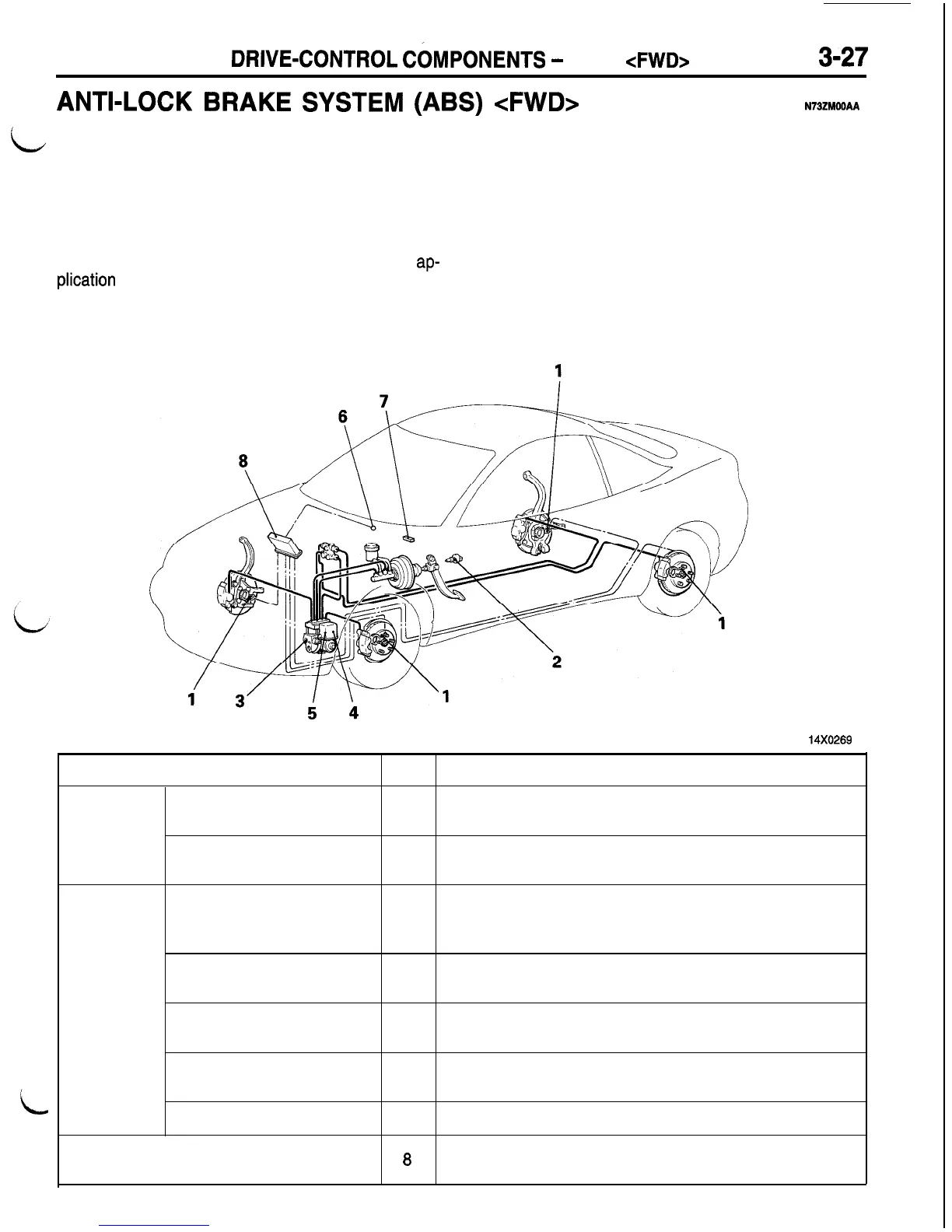DRIVE-CONTROL
CbMPONENTS
-
ABS
<FWD>
3-27
ANTI-LOCK
BRAKE
SYSTEM
(ABS)
<FWD>
N73ZMOOAA
L
The ABS used in the 1995 Eclipse is similar to
the previous one.
The ABS is a brake system which detects skids
that could be caused by abrupt brake application
or by brake application on a slippery road surface,
and adequately controls the brake fluid pressure
to prevent skids caused by locked wheels. It assures
directional stability and steerability during brake
ap-
plication
and reduces the brake stopping distance.
The basic principles and effects of the ABS are
the same as those of the conventional system.
The major features of the ABS are described below.
l
When a failure occurs in the system, you can
identify the faulty area in the diagnostic test
mode. The failure data stored in memory is
not erased even if the ignition switch is placed
in the OFF position. Use of the scan tool enables
you to read the diagnostic trouble code or clear
the memory. In addition, you can read the sensor
data (data list) stored in the electronic control
unit (ECU) and test the hydraulic unit (HU) and
other actuators. (Refer to P. 3-43.)
14X0269
i
Sensor
Part name
Wheel speed sensor
Stop light switch
No.
Function
1
Sends an AC signal with a frequency proportional to the ro-
tating speed of the individual wheel to the ABS-ECU.
2
Sends a signal to the ABS-ECU indicating whether the
brake pedal is pressed or not.
Hydraulic unit (HU)
Controls braking pressure for each wheel depending on the
3
signal from the ABS-ECU.
Includes built-in plunger valve
Actuator
Motor relay
Valve relay
4
Closes contact in response to a signal from the ABS-ECU to
allow the power to be supplied to the motor in the HU.
5
Is turned ON by the ABS-ECU signal and supplies power to
the solenoid valve in HU.
ABS warning light
6
Is in the combination meter and lights up when there is
trouble in ABS.
Data link connector
Electronic control unit (ECU)
7
Outputs diagnostic trouble codes.
8
Controls the actuators such as HU according to the signals
from the individual sensors.

